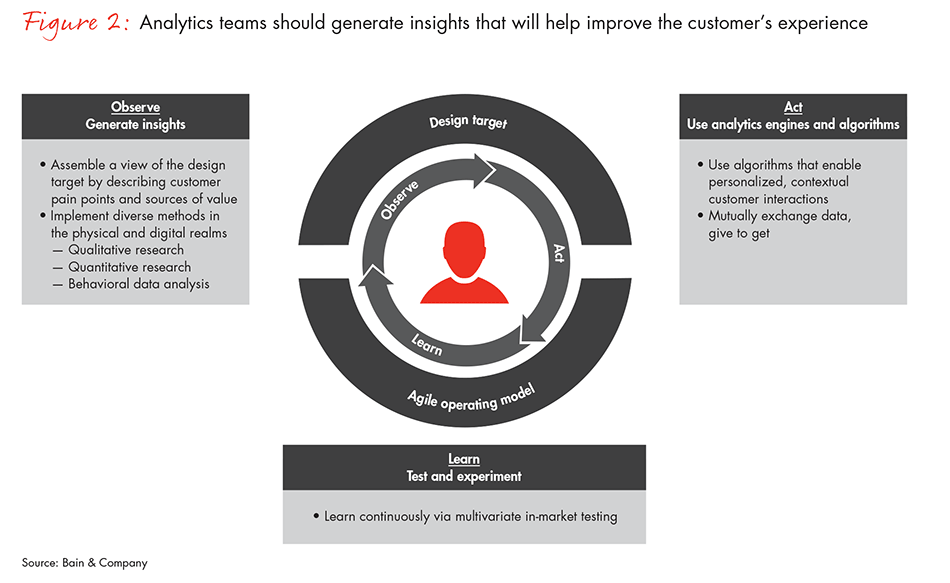Empowering Relationships: BVSM Marriage Services
Explore expert advice and support for successful marriages.
Are You Monitoring Your Loyalty? The Unexpected Insights from Retention Analytics
Unlock hidden opportunities! Discover how retention analytics can transform your loyalty strategy and boost customer engagement.
Unlocking the Secrets of Retention: How Analytics Can Boost Customer Loyalty
In today's competitive market, understanding customer behavior is essential for businesses aiming to improve retention rates. Analytics provides valuable insights that allow organizations to identify patterns and preferences among their customer base. By utilizing tools such as customer segmentation and predictive modeling, businesses can tailor their offerings and communications to meet the specific needs of their users. For instance, analyzing purchase history can reveal which products are frequently bought together, enabling targeted marketing strategies that foster customer loyalty.
Furthermore, implementing analytics not only helps in understanding the customers but also in measuring the effectiveness of retention strategies over time. Businesses can track key performance indicators (KPIs) such as churn rate, customer lifetime value (CLV), and Net Promoter Score (NPS) to gauge their success. By continuously monitoring these metrics, organizations can make data-driven decisions to refine their approaches and enhance customer satisfaction. In this way, leveraging analytics becomes a crucial step in unlocking the secrets of retention and ultimately boosting customer loyalty.

Counter-Strike is a popular tactical first-person shooter game that has captivated players around the world since its release. It involves intense team-based gameplay where players choose to be either terrorists or counter-terrorists, competing to accomplish objectives. Players often look for ways to enhance their gaming experience, and using a clash promo code can provide various in-game benefits.
Are You Overlooking These Key Metrics in Your Loyalty Program?
When it comes to evaluating the effectiveness of your loyalty program, it’s easy to focus on surface-level metrics such as sign-up rates and redemption frequency. However, overlooking key metrics can lead to misguided strategies that undermine your program’s potential. For instance, consider the Customer Lifetime Value (CLV). This metric provides critical insights into how much revenue a customer is expected to generate for your business throughout their relationship with you. By analyzing CLV, you can identify your most valuable customers and tailor your loyalty rewards to incentivize longer-term engagement.
Another often-neglected metric is the Net Promoter Score (NPS) of your loyalty program. This score measures customer satisfaction and their likelihood to recommend your brand to others, serving as a vital indicator of program health. Regularly surveying your loyalty members about their experience can uncover areas for improvement and highlight what is working well. Ignoring these insights makes you risk losing customers to competitors who prioritize customer feedback and adapt accordingly.
Why Monitoring Retention Analytics is Essential for Long-Term Business Growth
Monitoring retention analytics is crucial for understanding customer behavior and enhancing overall business performance. Retention analytics provides insights into how well a business retains its customers over time, revealing patterns that can significantly influence marketing strategies and product development. By regularly analyzing these metrics, businesses can identify what keeps customers engaged and satisfied, leading to improved customer loyalty and repeat purchases. This data-driven approach not only helps in pinpointing areas of improvement but also aids in developing targeted campaigns that resonate with the audience.
Moreover, focusing on retention analytics is essential for long-term business growth because it often costs less to retain existing customers than to acquire new ones. According to studies, increasing customer retention rates by just 5% can lead to a profit increase of 25% to 95%. This highlights the importance of fostering relationships with existing customers through personalized experiences and responsive customer service. Businesses that prioritize retention are better positioned to adapt to changing market conditions and consumer preferences, ultimately creating a sustainable growth trajectory that benefits the bottom line.